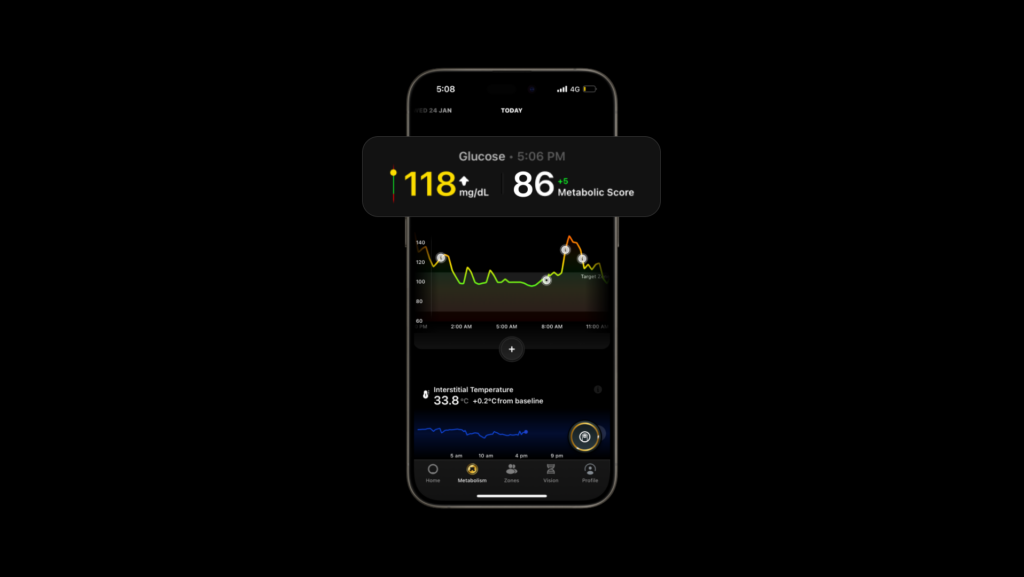Metabolic Score (ranging from a scale of 0-100) is an indicator of your overall metabolic health. It is a factor of your food consumption, activities performed, stress levels, and quality of sleep.
It depends on three factors:
Glucose variability
Glucose variability is the ups and downs present in your glucose levels graph. A low variability indicates that you have a stable glucose trend which is an indicator of good metabolic health. A high variability depicts that your body is subjected to high glucose spikes and crashes which might be the reason for laziness and lethargy that you feel after a high carbohydrate meal.
In general, make sure you eat a balanced diet that gives you a flat glucose line without spikes and crashes. This will result in a better metabolic score.
Average glucose
Average glucose is calculated from all the glucose data points for that day. To function properly, your body maintains a baseline glucose level. Baseline glucose also affects your average glucose. Lower average glucose is good for the metabolic score. However, it should not be lower than the minimum target range value ( 70 mg/dL ).
Exercising well and eating food with a lower glycemic response will help you maintain lower average glucose, improving your metabolic score.
Time in target
Ideal target glucose range is 70-110 mg/dL. Having your glucose levels within this range throughout the day will help you maximize your metabolic score.
Pay attention to when your glucose levels go out of target. Taking a walk after meals which is usually when your glucose levels will exceed the maximum target and eating a light snack when your glucose levels fall below the min target will help.
At the start of your M1 journey, you might observe low metabolic scores. When you adjust your lifestyle choices in response to your zone score and metabolic score and elevate your metabolic awareness, you will start seeing higher metabolic scores.








